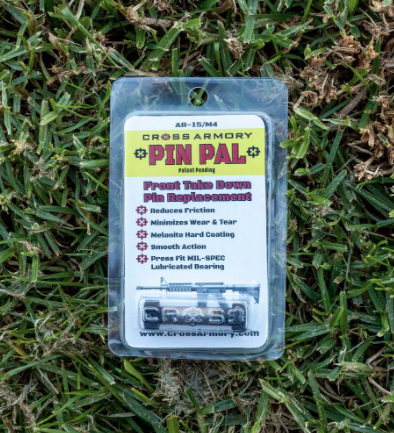Please keep in mind that we are not lawyers, so we cannot offer legal advice. However, we do think the law is reasonably clear as it relates to ARs. There have been several webinars presented by NRA and CRPA that discuss the law in detail as well.
Steel and aluminum don’t mix, especially concerning the upkeep and maintenance of your AR-15, so Cross Armory developed the state-of-the-art PIN PAL to reduce rotational wear.
The AR-15 was not intended or constructed for frequent opening by its operator. The increased use adds wear and tear on the upper receiver’s takedown pinhole as a steel pin bearing on the aluminum receiver. Our AR-15 accessory gives the user a smoother experience, especially in regulated states requiring the separation of the upper and lower receivers and an AR-15 magazine lock to perform reloading functions.
The PIN PAL is just another AR-15 feature to give the user an optimal experience, as originally intended.
As such the PIN PAL puts an end to the slop created in the upper received made from grating between steel and aluminum parts. A lubricated captive bearing reduces wear from the standard steel front takedown pin paired with aluminum receivers.
The PIN PAL puts a steel pin bearing on a pre-lubricated MIL-SPEC metal bearing to keep the gun tight and functioning as it did when it was born from the factory.
Installation is simple
Installing the PIN PAL takes minutes beginning with separating the upper and lower receivers. Remove the rear takedown pin and then front takedown pin to provide separation between the two receivers.
Remove the nut from the PIN PAL and then use the PIN PAL front takedown pin to seed the captive bearing into the upper receiver. Use a nylon mallet (or something similar) to tap the pin, thus pushing the captive bearing into the receiver. Do not use a metal hammer as it could damage the PIN PAL.
When the two receivers fitting properly, insert the PIN PAL with the logo on the outside of the right side of the firearm. Make sure the PIN PAL is flush with the lower receiver and then tighten the nut to make sure it is tied to the lower receiver.
Again, this is not a legal representation. We recommend that all of our clients do their own research by reading the law and regulations.


